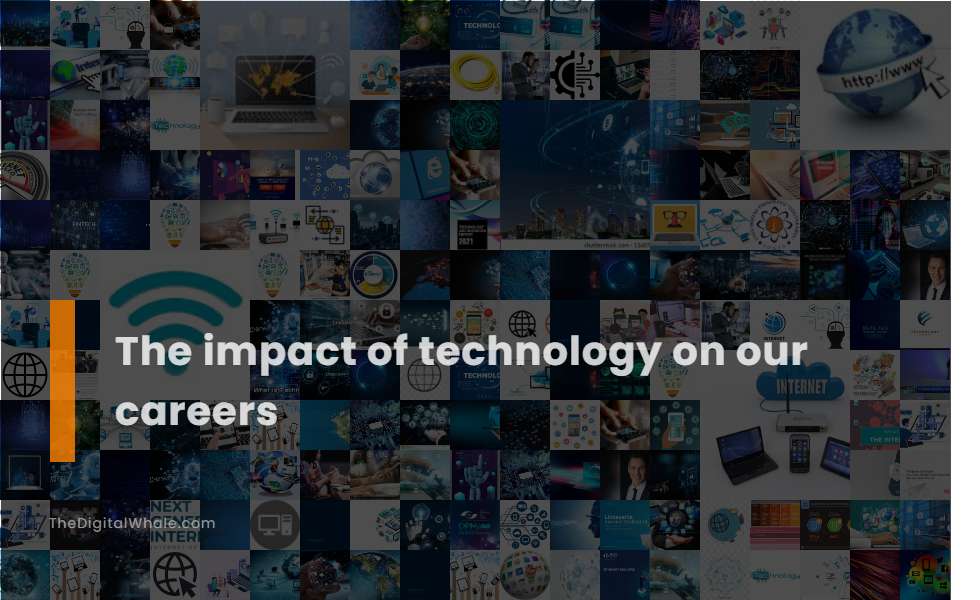The Impact of Technology On Our Careers
What is the most important thing about using technology for your career? What are the effects of technology on the amount of jobs in the US? Let's find out more about The Impact of Technology On Our Careers.

Technology is shifting the way almost every job task is performed, affecting both factory workers and knowledge workers.
Technology is continuously transforming job tasks across all sectors, impacting both factory workers and knowledge workers by introducing new skills requirements. This shift emphasizes the importance of cognitive problem-solving, analytical thinking, and technology literacy. As these changes unfold, there is a growing need for rapid reskilling and upskilling to ensure that the workforce remains competitive and adaptable. For more insights on how these trends are shaping the future of labor, visit the World Economic Forum website.
New technology adoption and digitalization are the top drivers of business and job transformation.
The adoption of new technology and digitalization is driving significant changes in careers, where traditional roles evolve to require a mix of technical and digital skills. As automation and AI take over repetitive tasks, new job categories are emerging, emphasizing the need for continuous learning and adaptability. To prepare your workforce for these changes, it's essential to focus on equipping them with the necessary skills and knowledge. Discover more about how Digital Transformation is reshaping the workforce on CogentInfo's website.
The net impact of most technologies on jobs is expected to be positive over the next five years, but with a structural labor market churn of 23%.
The net impact of most technologies on jobs is expected to be positive over the next five years, driven by emerging fields like Big Data Analytics, Climate Change and Environmental Management, and Encryption and Cybersecurity. However, this positive influence is accompanied by a structural labor market churn of 23%, involving the creation of 69 million new jobs and the elimination of 83 million jobs. This dynamic results in a net decrease of 14 million jobs, equating to 2% of current employment. For more insights on how these factors shape employment trends, visit the Future of Jobs Report 2023 by the World Economic Forum.
44% of workers' skills will be disrupted, with a focus on cognitive problem-solving, analytical thinking, and technology literacy.
The future of work is undergoing significant transformation as the digital economy reshapes the landscape of workforce skills. By 2025, an astonishing 44% of workers' skills will experience disruption, necessitating an urgent adaptation to evolving demands. Central to this shift is an increasing need for cognitive skills including analytical thinking, creative thinking, and technology literacy. As businesses and industries pivot towards digital integration, the emphasis on these cognitive capabilities becomes crucial for navigating the changing job market. To gain deeper insights into this transformative trend, explore the detailed analysis by The World Bank through their comprehensive report, which sheds light on these critical developments and their implications for the global workforce. Embracing and cultivating these skills will be pivotal for individuals striving to succeed in a rapidly evolving economic environment.
AI and Big Data are becoming core skills, especially in large organizations, and are expected to be top priorities in company training strategies until 2027.
AI and Big Data are rapidly becoming core skills, with a significant number of large organizations prioritizing training in these areas until 2027. Driven by a predicted increase in demand for AI and machine learning specialists, as well as data analysts and scientists, businesses are making strategic moves to adapt. In fact, over 42% of businesses are placing AI and Big Data as key training priorities, with these skills ranking among the top educational focus areas. Companies are proactively planning to invest in learning and training to keep pace with technological advancements. For more insights on this trend, you can visit the TechInformed website, which highlights how businesses are preparing for the future workforce demands by placing these technologies at the forefront of their strategic planning.
Related:
What are some of the benefits of using a VPN for employees? What are some ways to use technology to improve workplace productivity? Let's find out more about Using Technology To Improve Your Productivity at Work.
Automation has the potential to replace routine manual and cognitive tasks, but also creates new non-routine cognitive and social tasks.
Automation has the potential to replace routine manual and cognitive tasks, but it also complements and creates many non-routine tasks, increasing productivity, quality, and innovation. This advancement allows workers to focus more on social interactions, collaboration, and continuous improvement. For more insights on how emerging technologies are reshaping job roles, you can explore this article on New Technology Changing Job Design by the IZA World of Labor.
Digital platforms are changing how workers and jobs are matched, improving transparency and efficiency in the labor market.
Digital platforms, such as LinkedIn and Monster, are revolutionizing the way workers and jobs are matched, enhancing transparency and efficiency in the labor market by using powerful search capabilities and sophisticated screening algorithms to speed up the hiring process and reduce unemployment. For more in-depth insights on the impact of these technologies, visit the Technology Jobs And The Future Of Work page on McKinsey's website.
New technologies are creating new jobs in industries such as IT development, hardware manufacturing, and app creation.
New technologies are creating new jobs in industries such as IT development, hardware manufacturing, and app creation. In fact, about one-third of new jobs in the U.S. over the past 25 years have been in areas that did not exist or barely existed before. These innovations have led to a net positive impact on employment. For more insights into how these transformations are shaping the workforce, you can explore the analysis on Technology Jobs and the Future of Work on McKinsey's website.
The IT revolution has polarized labor markets, reducing middle-skill jobs and increasing wage inequality while creating more high-skill jobs.
The IT Revolution has polarized labor markets by automating routine tasks, thereby reducing the demand for middle-skill jobs and increasing wage inequality. This shift has simultaneously created more productive and higher-paying jobs for high-skill workers, along with new non-routine cognitive and social tasks. For an in-depth analysis on these trends, visit the article How Is New Technology Changing Job Design. Through this transformation, job design is continuously evolving, challenging workers and companies to adapt in a rapidly changing technological landscape.
There is a growing need for skills such as data analysis, machine learning, and interpersonal skills to adapt to technological changes.
The growing need for skills such as data analysis, machine learning, and interpersonal skills is driven by the increasing demand for tech roles, with 2024 expected to see hundreds of thousands of tech job openings and a surge in upskilling to meet this demand, emphasizing the importance of continuous learning and adaptability in a tech-driven job market. Indeed, the impact of technology, particularly AI, will transform an overwhelming majority of IT jobs. This transformation highlights the necessity for skills in data analytics, machine learning, AI literacy, and rapid engineering. As detailed by CIO, the need for workers to reskill and upskill is critical to remain relevant in this ever-evolving tech landscape.
Related:
What are the benefits of data analytics in modern businesses? What are some common big data and marketing impacts of using big data? Let's find out more about Big Data and Its Impact On Businesses and Workers.
